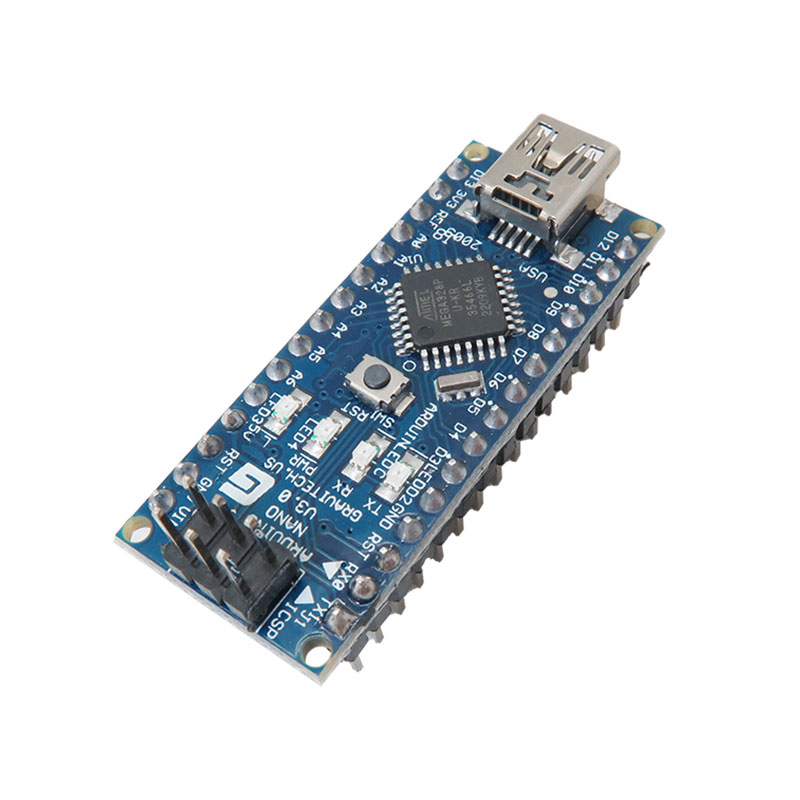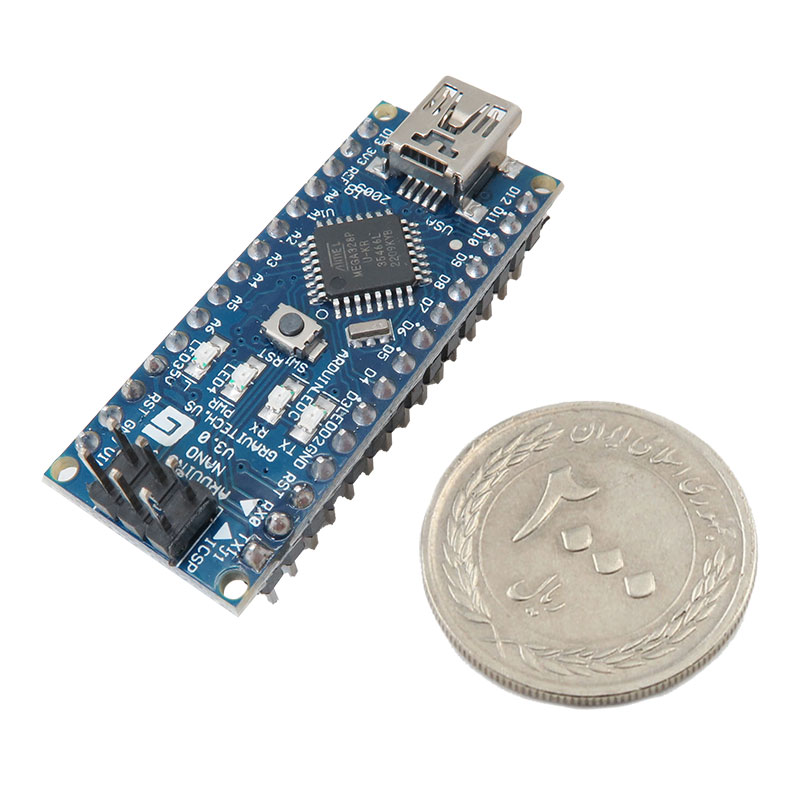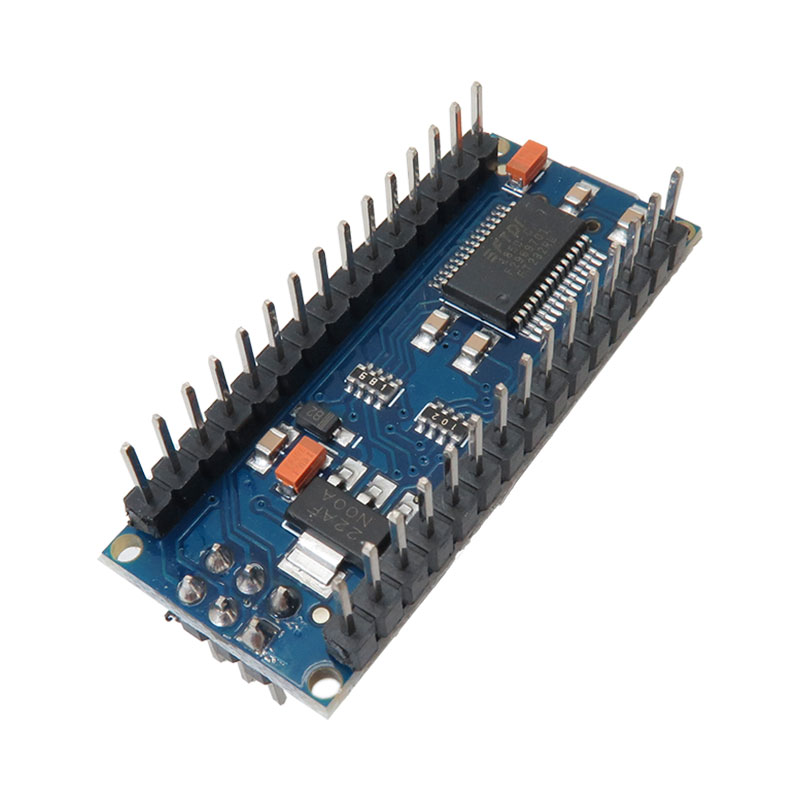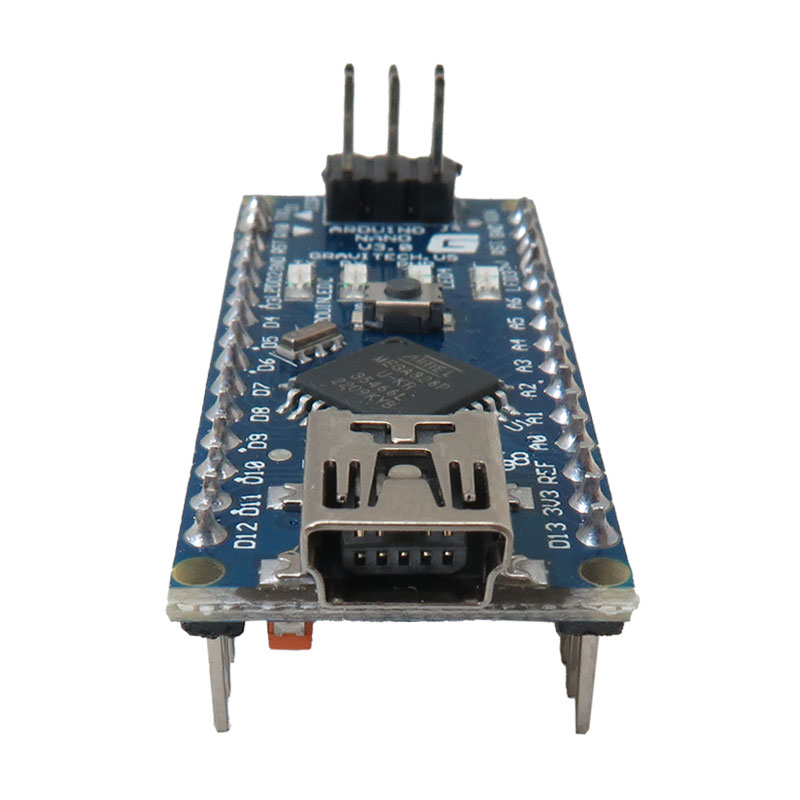198,700 تومان
در حال حاضر موجود نمی باشد
موجودی در حال ارسال به انبار
-
60 عدد4 روز پیش
علاقه مندان : 23 نفر
وضعیت : فعال
تعداد مرجوعی : 0
دنبال کنندگان : 24 نفر
قدمت : 12 سال و 5 ماه و 22 روز
وزن : 25 گرم
کل فروش : 1642 عدد
تعداد سفارش ها : 1011 سفارش
4 از 5.0 با 42 رای
برد آردوینو NANO دارای پردازنده مرکزی ATmega328
برد آردوینو نانو یک برد کوچک و کامل می باشد. طراحی آن به نحوی است که
استفاده از آن بر روی bread board را ساده می نماید. میکروکنترلر استفاده
شده در این برد ATmega328 می باشد و کارایی آن کم و بیش شبیه برد آردوینو Duemilanove است اما در یک شکل متفاوت.
حذف سوکت منبع تغذیه، استفاده از
قطعات SMD و مینی USB به جای پورت USB استاندارد باعث کوچک شدن برد و کاهش
وزن آن گردیده است. اندازه برد فقط 17,8 در 43,2 میلیمتر و وزن آن چیزی در
حدود 7 گرم می باشد و این خصوصیات منحصر به فرد استفاده از برد را برای
ربات های پرنده و سایر ربات ها و ماشین های کوچک میسر می سازد.
این برد
دقیقا شبیه سایر بردهای آردوینو نانو می باشد با این تفاوت که به جای آی سی
FT232 ، چیپ CH340 در آن استفاده شده است، زمان نصب درایور می بایست
درایور این آی سی بر روی سیستم نصب شود.
هشدار : حداکثر ولتاژ ورودی
بردهای آردوینو غیر اورجینال 9 ولت می باشد در صورت اعمال ولتاژ 12 ولت
(با وجود ذکر شده در دیتاشیت) برد دچار آسیب دیدگی می گردد.
کاربرد ماژول آردوینو نانو با تراشه CH340:
- ربات های پرنده
- هواپیماهای مدل
مشخصات ماژول آردوینو نانو با تراشه CH340:
- میکروکنترلر: ATmega328
- ولتاژ عملیاتی: 5 ولت
- ولتاژ ورودی (پیشنهادی): 12 ~ 7 ولت
- ولتاژ ورودی (محدوده): 20 ~ 6 ولت
- پین های دیجیتال ورودی/خروجی: 14 (6 تای آن به عنوان خروجی PWM استفاده می شود)
- پین های ورودی آنالوگ: 6
- جریان DC هر پین ورودی و خروجی: 40 میلی آمپر
- حافظه فلش: 32 کیلوبایت که 0.5 کیلوبایت از آن برای BootLoader مورد استفاده قرار می گیرد.
- سرعت کلاک: 16 مگاهرتز
مستندات:
اطلاعات تکمیلی برد آردوینو نانو
Description:
Arduino Nano is a small, compatible, flexible and breadboard-friendly Microcontroller board, based on ATmega328 ( Arduino Nano V3.x).
It comes with exactly the same functionality as in Arduino UNO but quite in small size.
It comes with an operating voltage of 5V, however, the input voltage can vary from 7 to 12V.
Arduino Nano Pinout contains 14 digital pins, 8 analog Pins, 2 Reset Pins & 6 Power Pins.
Each of these Digital & Analog Pins is assigned with multiple functions but their main function is to be configured as input or output.
They are acted as input pins when they are interfaced with sensors, but if you are driving some load then use them as output.
Functions like pinMode and digital Write are used to control the operations of digital pins while analog Read is used to control analog pins.
The analog pins come with a total resolution of 10bits which measure the value from zero to 5V.
Arduino Nano comes with a crystal oscillator of frequency 16 MHz. It is used to produce a clock of precise frequency using constant voltage.
There is one limitation using Arduino Nano i.e. it doesn’t come with DC power jack, means you can not supply the external power source through a battery.
This board doesn’t use standard USB for connection with a computer, instead, it comes with Mini USB support.
Tiny size and breadboard-friendly nature make this device an ideal choice for most of the applications where the size of the electronic components is of great concern.
Flash memory is 16KB or 32KB that all depends on the Atmega board i.e Atmega168 comes with 16KB of flash memory while Atmega328 comes with a flash memory of 32KB.
Flash memory is used for storing code. The 2KB of memory out of total flash memory is used for a bootloader.
The SRAM can vary from 1KB or 2KB and EEPROM are 512 bytes or 1KB for Atmega168 and Atmega328 respectively.
It is programmed using Arduino IDE which is an Integrated Development Environment that runs both offline and online.
No prior arrangements are required to run the board.
All you need is board, mini USB cable and Arduino IDE software installed on the computer.
No separate burner is required to compile and burn the program as this board comes with a built-in boot-loader. The Arduino Nano has a number of facilities for communicating with a computer, another Arduino, or other microcontrollers.
The ATmega328 provides UART TTL (5V) serial communication, which is available on digital pins 0 (RX) and 1 (TX). An FTDI FT232RL on the board channels this serial communication over USB, and the FTDI drivers (included with the Arduino software) provide a virtual com port to software on the computer.
Application:
flight controller
aircraft models
aircraft models
Features:
Microcontroller: ATmega328
Architecture: AVR
Operating Voltage: 5V
Input Voltage(Recommended): 7 ~ 12V
Input Voltage(Range): 6 ~20V
Digital Input / Output Ports: 14(6 pins used for PWM Output)
Analog Input Ports: 6 ( A0 ~ A7)
Support 9V battery power supply
Clock frequency: 16 MHz
Flash Memory: 32KB (0.5 KB used for Bootloader)
DC Current I/O Pin: 40mA
SRAM: 2KB
EEPROM: 1KB



